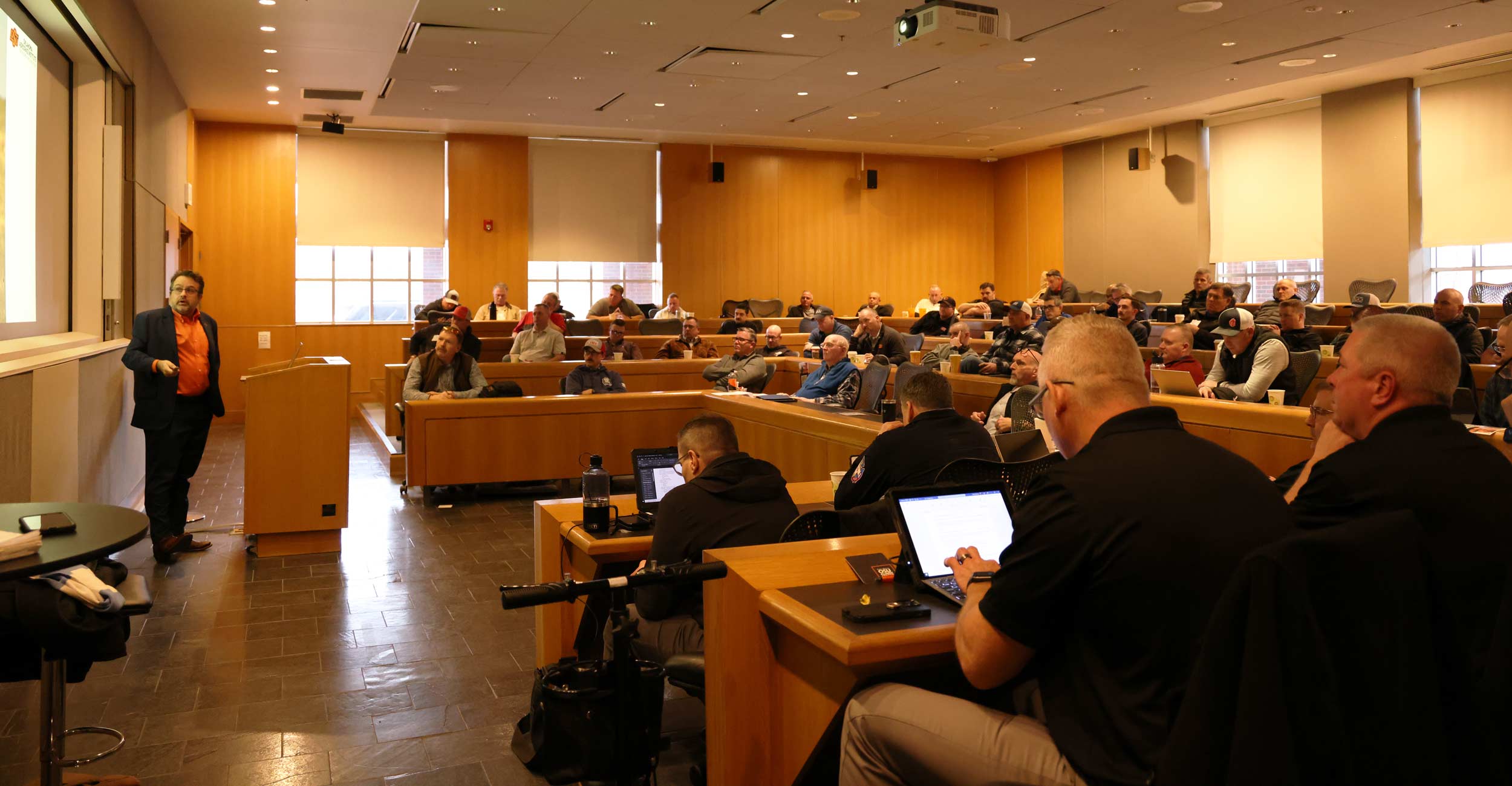
Oklahoma fire chiefs converge to learn how OAIRE drone research helps first responders save lives
Friday, January 26, 2024
Media Contact: Sydney Trainor | Communications Specialist | 405-744-9782 | sydney.trainor@okstate.edu
During an emergency, time is of the utmost importance.
Oklahoma State University researchers are looking to use drone technology to provide first responders with assistance in aiding their response times.
Dr. Jamey Jacob, executive director of OSU’s Oklahoma Aerospace Institute for Research and Education, spoke Thursday about the future of drones in first response at the Oklahoma Fire Chief Association winter workshop in the ConocoPhillips OSU Alumni Center.
Under the umbrella of The Innovation Foundation at OSU, OAIRE is developing new technology to help fire chiefs statewide through collaborative programs like the LaunchPad Center for Advanced Air Mobility Drones for First Responders program.
"At The Innovation Foundation, we believe that driving innovation in cutting-edge drone technology holds the potential to revolutionize life-saving solutions in emergency response,” said Elizabeth Pollard, CEO of The Innovation Foundation. “Dr. Jamey Jacob's exemplary work at OAIRE underscores our commitment, as we pioneer a future where technology seamlessly integrates into real-world applications through hands-on research and development.”
This research is also elevating OSU to lead in aerospace innovation and application aligning with the university’s strategic plan to become the preeminent land-grant university.
OSU has one of the best fire protection programs as well as excellent drone programs, Jacob said. The drone program is focused on engineering development systems, as well as how to advance that technology and put it in the people’s hands. Jacob explained the three general applications of unmanned aircraft systems technology are: observation, delivery and weather, and where they are headed in the future.
Tulsa Fire Chief Michael Baker said opportunities to work with Jacob prompt him and other fire chiefs to begin thinking about how UAS technology will have broad implications on the future of their profession from training and budgets to public safety.
One significant focus area for OAIRE centers on seasonal fire weather and general weather patterns, emphasizing the utilization of systems for effective disaster response. The application of drones in observations spans various critical areas, including assessing fuel load and condition characteristics, enhancing situational awareness, collecting data for wildfire modeling, evaluating flood situations, and aiding in search and rescue efforts.
In Oklahoma, research concentrates on wildfires, Jacob said. Drones serve multiple purposes, not only for fire detection, but also for guiding ground personnel beyond initial sighting points. Using diverse sensors, including infrared, enables the identification of hot spots and fire lines, facilitating strategic deployment. In addition, the imagery obtained through drone technology often surpasses the resolution of satellite imagery, enhancing overall effectiveness in disaster response and management.
“Drone technology will help us to determine how we better tailor our deployment and let me know what resources I need to send,” Baker said. “Fire apparatus are very expensive, and the more you drive them, the more they break down. Every time we leave a fire station, it's a risk. I put people out in jeopardy.
“You can only drive so far in traffic, but if we had someone in the Arkansas River, we could see so much more from a drone. And if we do have someone, we could see where they are. Then we're not sending boats way upstream when they’re downstream, and we know exactly where they're at because we’ve got eyes on them quickly. So, it speeds up the response, it is more effective response and it's the right resource.”
Jacob’s team is also working to enhance weather prediction data with the goal of providing real time information to first responders and to create models that can predict what will happen in the next hour, and the ensuing 12 hours.
“This is really focused on the ability to pull in data that you can utilize to help improve your sourcing,” Jacob said. “The reason for this is, when you're operating things such as smaller drones or larger Uber air taxis, you must know what that weather scenario we need that information to be able to fly these things. At the same time, you can use these things as a useful tool to get that weather information together and use that to help provide that critical data to tell you what that looks like.”
Through his role, Baker collaborates with Jacob on programs like DFR to add a first responders' perspective. He said this collaboration provides essential insight into the future of public safety.
“If we don't have academic partners, government partners or community partners, we're not going to be effective in this and I think that's really the key,” Baker said.
In the future, Jacob is looking forward to establishing an OSU UAS first responder training course.
“We have OAIRE, and we have both research and education missions. So, we're really focused not just on doing the research, but also making sure that we're educating and training the next generation,” Jacob said.
